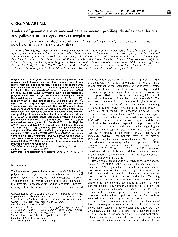摘要
Polycythemia vera (PV), essential thrombocythemia and primary myelofibrosis, are myeloproliferative neoplasms (MPNs) with distinct clinical features and are associated with the JAK2V617F mutation. To identify genomic anomalies involved in the pathogenesis of these disorders, we profiled 87 MPN patients using Affymetrix 250K single-nucleotide polymorphism (SNP) arrays. Aberrations affecting chr9 were the most frequently observed and included 9pLOH (n = 16), trisomy 9 (n = 6) and amplifications of 9p13.3-23.3 (n = 1), 9q33.1-34.13 (n = 1) and 9q34.13 (n = 6). Patients with trisomy 9 were associated with elevated JAK2V617F mutant allele burden, suggesting that gain of chr9 represents an alternative mechanism for increasing JAK2V617F dosage. Gene expression profiling of patients with and without chr9 abnormalities (+9, 9pLOH), identified genes potentially involved in disease pathogenesis including JAK2, STAT5B and MAPK14. We also observed recurrent gains of 1p36.31-36.33 (n = 6), 17q21.2-q21.31 (n = 5) and 17q25.1-25.3 (n = 5) and deletions affecting 18p11.31-11.32 (n = 8). Combined SNP and gene expression analysis identified aberrations affecting components of a non-canonical PRC2 complex (EZH1, SUZ12 and JARID2) and genes comprising a 'HSC signature' (MLLT3, SMARCA2 and PBX1). We show that NFIB, which is amplified in 7/87 MPN patients and upregulated in PV CD34+ cells, protects cells from apoptosis induced by cytokine withdrawal. Blood Cancer Journal (2011) 1, e40; doi:10.1038/bcj.2011.39; published online 11 November 2011
- 出版日期2011-11
- 单位西北大学
